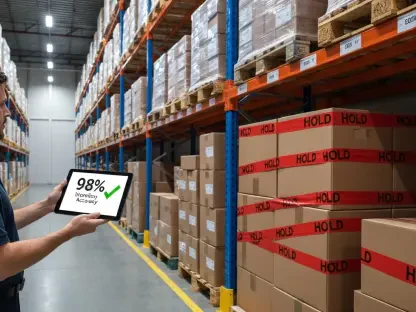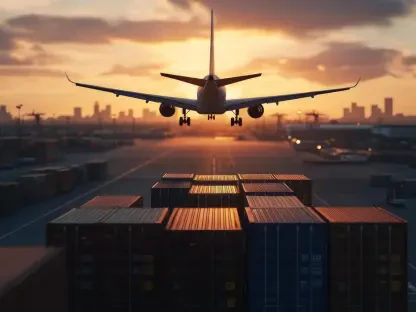Today, we’re thrilled to sit down with Rohit Laila, a veteran in the logistics industry with decades of experience in supply chain and delivery. Rohit’s expertise and passion for technology and innovation in the sector make him the perfect person to help us unpack Amazon Air’s recent expansion into the Caribbean, specifically the Dominican Republic. This move signals a significant shift in the e-commerce giant’s strategy to grow beyond its internal delivery network into a broader logistics player. In our conversation, we’ll explore the motivations behind this expansion, its impact on local markets, the evolution of Amazon Air’s fleet and operations, and how it positions itself against traditional cargo giants. Let’s dive into the details of this exciting development.
How did Amazon Air decide on the Dominican Republic as its first Caribbean destination, and what makes this location stand out?
The Dominican Republic is a strategic choice for Amazon Air, not just because of its geographic position but also due to its growing status as a trade hub. The region has seen a spike in demand for e-commerce and perishable goods, which aligns perfectly with Amazon’s strengths. Plus, cargo capacity in the Caribbean is often limited, so there’s a gap to fill. Amazon likely saw an opportunity to tap into this underserved market while testing the waters for broader regional expansion. The country’s infrastructure and proximity to other Latin American markets also make it a logical stepping stone.
What does this Caribbean expansion reveal about Amazon Air’s long-term vision for growth in international markets?
This move is a clear indicator that Amazon Air isn’t just content with being a domestic delivery arm for Prime packages. It’s part of a larger ambition to build a global logistics network. The Caribbean is likely a starting point for deeper penetration into Latin America, where e-commerce is booming. I wouldn’t be surprised if Amazon is already eyeing markets like Mexico or Brazil next. Their focus seems to be on creating an integrated, end-to-end system that can handle both their own needs and those of third-party customers on a much larger scale.
What kind of ripple effects might Amazon Air’s presence have on local businesses and shippers in the Dominican Republic?
For local businesses, Amazon Air’s entry could be a game-changer. It introduces more options for shipping, which is huge in a region where capacity constraints often slow things down. This could mean faster delivery times and potentially lower costs if competition heats up. Small and medium-sized enterprises might find it easier to reach international markets through Amazon’s network. However, there’s also a flip side—local shippers might struggle to compete with Amazon’s scale and pricing power over time. It’s a double-edged sword.
Amazon Air originally focused on its own packages but started serving third-party customers in 2019. Can you explain how this shift has reshaped their business model?
Opening up to third-party customers was a brilliant move for Amazon Air. Initially, their fleet was all about speeding up Prime deliveries in the U.S., but flying planes with empty cargo space is inefficient and costly. By taking on outside clients, they’ve turned spare capacity into revenue. This not only offsets operational costs but also helps fund further expansion. It’s a shift from being just a cost center to becoming a profit-generating arm of the business, positioning Amazon Air as a true logistics provider rather than just an in-house solution.
Can you break down how Amazon Air’s fleet has adapted to support international routes like those in the Caribbean?
Amazon Air’s fleet evolution shows a clear intent to handle diverse needs. They started with Boeing 767s, which are great for medium to long-haul domestic routes. But as they’ve expanded, they’ve added Boeing 737s for shorter, regional hops—perfect for places like the Caribbean—and Airbus A330 freighters for heavier, longer international flights. This mix gives them flexibility to optimize routes based on distance and cargo volume. For the Caribbean, those 737s are likely key, allowing frequent, cost-effective trips without overcommitting resources.
How does Amazon Air differentiate itself from established cargo giants like FedEx, UPS, and DHL in today’s market?
Amazon Air’s biggest edge is its end-to-end control over the logistics chain. Unlike traditional carriers that focus purely on transport, Amazon integrates warehousing, air cargo, and last-mile delivery into one seamless system. This allows for unmatched speed and efficiency, especially for e-commerce. While they don’t yet match the global reach or fleet size of FedEx or UPS, their ability to prioritize their own packages while selling excess capacity to others makes them a unique competitor. They’re playing a different game—one that’s hard to replicate.
What’s your take on Amazon Air’s recent partnership in South Korea and how it fits into their broader logistics strategy?
The deal with Air Premia in South Korea is a smart piece of Amazon Air’s global puzzle. By leveraging Air Premia’s passenger flights for belly cargo and transferring shipments to their own freighters in Honolulu, Amazon extends its reach into Asia without needing to build a full network there from scratch. It’s a cost-effective way to connect Asian markets to their U.S. hubs and beyond. This kind of partnership shows Amazon is thinking strategically—using alliances to scale quickly while building out their own capabilities over time.
What is your forecast for the future of Amazon Air as it continues to expand into new regions like the Caribbean?
I’m bullish on Amazon Air’s future. They’ve got the capital, the vision, and the data to keep pushing boundaries. The Caribbean is just a stepping stone—I expect them to target more Latin American markets within the next few years, possibly even expanding further into Asia and Europe. Their focus on third-party cargo will likely grow, making them a serious rival to traditional carriers. The big question is whether they’ll aim to become a full-scale global cargo airline or stay focused on supporting their e-commerce empire. Either way, their network will keep getting stronger, reshaping logistics as we know it.









